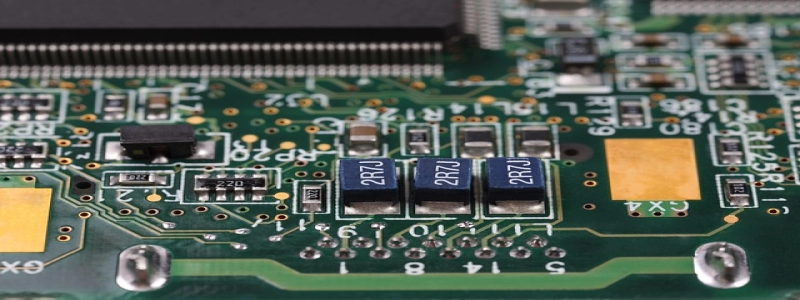[SFP Port to RJ45]
I. Introduction
A. Definition and Purpose
B. Importance in Networking
II. Understanding SFP Port
A. Definition and Functionality
B. Types of SFP Ports
1. Copper SFP Ports
2. Fiber SFP Ports
III. Introduction to RJ45
A. Definition and Role in Networking
B. Common Uses of RJ45
IV. SFP Port to RJ45 Converter
A. Need for Conversion
B. Functionality and Benefits of Converter
C. Compatibility and Connectivity
V. How to Convert SFP Port to RJ45
A. Step-by-Step Process
1. Gather the required equipment
2. Disconnect the cable from the SFP port
3. Attach the Converter
4. Connect the RJ45 Cable
B. Troubleshooting Tips
VI. Applications and Use Cases
A. Networking Equipment
B. Data Centers
C. Telecommunications
VII. Conclusion
A. Recap of the importance of SFP port to RJ45 conversion
B. Summary of the article
I. Introduction
A. Definition and Purpose
The SFP port to RJ45 article discusses the conversion of a Small Form-Factor Pluggable (SFP) port to a Registered Jack 45 (RJ45) port. The purpose of this article is to explain the process and benefits of converting these two types of ports in networking equipment.
B. Importance in Networking
In networking, SFP ports are commonly used in switches and routers to provide the flexibility of using different types of transceivers, such as copper or fiber. However, many devices require RJ45 ports for direct connectivity. Therefore, the ability to convert SFP ports to RJ45 is crucial in ensuring seamless connectivity and compatibility in various networking setups.
II. Understanding SFP Port
A. Definition and Functionality
SFP ports are hot-swappable interfaces used to connect networking devices, such as switches and routers, to fiber and copper networks. These ports allow for flexibility as different SFP transceivers with various data rates and transmission distances can be used interchangeably.
B. Types of SFP Ports
1. Copper SFP Ports
Copper SFP ports support Ethernet connections using twisted-pair copper cables, commonly known as Ethernet cables. These ports are used when a direct copper connection is required between networking devices, such as for short-distance connections within a local area network.
2. Fiber SFP Ports
Fiber SFP ports support optical fiber connections, which are used for long-distance data transmission. These ports enable efficient and high-speed data transfer over longer distances without loss of signal quality.
III. Introduction to RJ45
A. Definition and Role in Networking
RJ45, also known as an Ethernet port, is a standard connector used for wired Ethernet connections. It is commonly used for connecting devices, such as computers, printers, and routers, to local area networks.
B. Common Uses of RJ45
RJ45 ports are widely used in networking equipment as they provide a reliable and efficient means of transmitting data over wired connections. They are commonly used in switches, routers, modems, and other networking devices that require direct connectivity without the need for additional conversion.
IV. SFP Port to RJ45 Converter
A. Need for Conversion
The need for conversion arises when networking devices with SFP ports need to be connected directly to devices with RJ45 ports. In such cases, a converter is required to bridge the gap and enable seamless communication between these two types of ports.
B. Functionality and Benefits of Converter
A SFP port to RJ45 converter is a device that allows for the conversion of signals between SFP and RJ45 ports. It takes the optical or electrical signals from the SFP port and converts them into electrical signals compatible with RJ45 ports. The benefits of using a converter include easy integration of devices with different port types, cost-effective solution, and flexibility in network design.
C. Compatibility and Connectivity
It is important to ensure compatibility between the SFP port and RJ45 converter. Different types of SFP ports, such as copper or fiber, require specific converters designed for their respective signal types. Additionally, the converter should support the required data rate and transmission distance to ensure proper connectivity.
V. How to Convert SFP Port to RJ45
A. Step-by-Step Process
1. Gather the required equipment
Collect the SFP to RJ45 converter, appropriate cables, and the networking devices that need to be connected.
2. Disconnect the cable from the SFP port
Carefully unplug the existing cable connected to the SFP port on the networking device.
3. Attach the Converter
Insert the SFP to RJ45 converter into the SFP port, ensuring a secure and proper fit.
4. Connect the RJ45 Cable
Take the RJ45 cable and connect it to the converter. Plug the other end of the cable into the device with the RJ45 port to establish a direct connection.
B. Troubleshooting Tips
If the connection is not established properly, check the compatibility between the SFP port and the converter. Also, ensure that the cables are securely plugged into their respective ports and check for any loose connections.
VI. Applications and Use Cases
A. Networking Equipment
SFP port to RJ45 conversion is commonly used in networking equipment, such as switches, routers, and media converters, to allow for seamless connectivity between devices with different port types.
B. Data Centers
Data centers often require the conversion of SFP ports to RJ45 for direct connectivity between networking devices and servers. This conversion enables efficient data transfer within the data center infrastructure.
C. Telecommunications
Telecommunication networks often employ SFP port to RJ45 conversion to connect various devices, such as switches, routers, and IP telephones, to ensure reliable and high-quality communication.
VII. Conclusion
A. Recap of the importance of SFP port to RJ45 conversion
The ability to convert SFP ports to RJ45 is crucial in ensuring seamless connectivity and compatibility in networking setups. It allows for the efficient integration of devices with different port types, thereby enabling smooth data transfer and communication.
B. Summary of the article
In this article, we discussed the importance of SFP port to RJ45 conversion in networking. We explained the functions and types of SFP ports and introduced the role of RJ45 ports. We also covered the need for converters, their functionality, and the process of converting SFP ports to RJ45. Additionally, we explored various applications and use cases for SFP port to RJ45 conversion.







